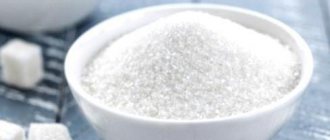In many cases, the development of severe heart disease can be prevented through exercise. Most leading experts in the field of cardiology believe that heart training should be an integral part of a healthy lifestyle. At the same time, doctors prescribe specific exercises even to patients suffering from cardiopathology.
The heart is a muscular organ that constantly pumps blood from the pulmonary circulation to the large circulation. Like any other muscle, the heart can be trained, allowing the body to adapt to increased stress, as well as stop the age-related degeneration observed in its walls.
Why is it necessary to stress the heart and blood vessels?
Are exercises aimed at training the heart useful in that they help prevent the development of such diseases? such as heart attack, angina and cardiomyopathy. Gradually, the myocardium adapts to regular loads, which leads to the normalization of metabolic processes occurring in the organs and tissues of the body.
Video: Physical activity and healing breathing
Cardio training is especially relevant for people involved in professional or amateur sports. As muscle mass increases, the heart needs to pump more blood, so this type of exercise is extremely important for improving athletic performance.
Basic rules for training
Any exercise can pose a health hazard if not performed correctly. People suffering from hypertension or those who have recently had a heart attack, stroke or surgery need to be more careful when choosing the type of physical activity. Patients with bronchial asthma are also at risk.
At the very beginning of any training, it is necessary to warm up. Without this, there is a high probability of ligament rupture, muscle overextension and joint damage. Warm-up should be comprehensive and take at least 10 minutes.
For those who suffer from excess weight, activities that involve increased axial load, such as running or jumping rope, are not recommended. Due to increased body weight, greater stress is placed on the knees and ankles, which can lead to injury and premature wear of the joints. In such cases, training on exercise bikes would be the best option. By adjusting the degree of resistance of the pedals, it is convenient to control your pulse and exercise in a certain heart rate range.
When exercising on a treadmill or during regular running, you need to push off with your toes and then move your foot to your heel. This technique allows you to absorb pressure and distribute it evenly along the lower limb, without focusing the load on a particular joint.
Exercises to train your heart
Fast walking is considered the best way to train the heart, as it allows you to carefully dose the load and also regulate your heart rate. For better monitoring, you can purchase a sports pulse oximeter that shows your heart rate in real time. Thanks to this function, you can change the intensity of the load and avoid overwork. To begin with, it is recommended to exercise for about 30 minutes a day, increasing the duration of exercise by 10 minutes each week. Then you can split the workout into 2 parts (morning and evening), 1 hour each.
Video: Gymnastics - Healthy heart and blood vessels
Swimming is recognized as the most comprehensive sport. Allows you to work out almost all muscle groups, increase overall endurance and also strengthen the cardiovascular system. It is necessary to start swimming sessions with light loads. In the first stages, it is better not to swim for more than 15 minutes with a gradual increase to 45 minutes. You shouldn’t chase distances, but rather concentrate on your sensations and rhythm control.
In order not to miss important
If the pulse is constantly much higher than 100, we can say that the heart is beating faster because it cannot cope with its load. This may be due to a variety of reasons, which must be determined by the doctor.
A decrease in heart rate does not mean anything good either. Sometimes, however, it can be associated with taking certain sedatives; the pulse also decreases during sleep. In other cases, a decrease in heart rate indicates disturbances in the hormonal and nervous regulation of the heart.
In addition to increasing or decreasing the pulse, the heart sends us other signals. Sometimes there may be a feeling that it has stopped for a second, “turned over”, lost its rhythm. Such signals may indicate arrhythmia, a heart disease that requires serious drug therapy, so it is best to immediately contact a cardiologist.
Take seriously cases when pain, burning, squeezing, and tightness occur. To make sure that this is due, for example, to simply strong feelings, you need to see a doctor. Sometimes such sensations are associated with vegetative-vascular dystonia, an ailment that is very common among both young and elderly people.
It arises from a failure of the nervous regulation of the heart and blood vessels. Despite the fact that a person literally feels like he is dying during an attack of vegetative-vascular dystonia, this disease is not the most dangerous. But it can also cause a lot of trouble when left untreated. If you consult a doctor in a timely manner, you can quickly bring your heart back to normal. In general, in one old song it was not for nothing that this organ was compared to a motor: it must work smoothly and constantly, and then everything will be in order.
Exercises at home
Not everyone has the opportunity to exercise outdoors or in special fitness centers, but this does not matter, since there are several simple exercises that can be performed at home.
In the first stages, you can do regular squats. For example, start with 20 reps and gradually increase by 10 per week. If difficulties arise, it is recommended to perform the exercise while leaning on the door arm, the back of the sofa or any other furniture.
On the Internet you can find a large number of videos with step aerobics classes. Thanks to the combination of dynamism and rhythm, exercises from this group are very convenient in terms of cardio loads. Step aerobics does not require special equipment other than a platform and can be safely practiced at home. Many people who are interested in such training note that training at home can be even more comfortable than in groups.
Many people think that yoga is a slow exercise that is not capable of causing an increase in heart rate, but in fact this is not the case. There is Ashtanga yoga, which provides fast and dynamic classes that combine aerobics and classical yoga. Loads of this type are convenient because they allow you to control your heart rate and take breaks to restore your breathing.
Principles and Exercises for a Healthy Heart
Heart exercises will be most effective if you follow these simple guidelines:
- Walk more often, if possible - avoid public transport and the elevator.
- If you have a sedentary job, try to walk along the corridor during your lunch break, and stretch more often.
- Take walks more often.
- It is helpful to stretch while watching television.
- Take a contrast shower.
- On weekends, lead an active lifestyle - ride a bike, go hiking.
- Sign up for a pool or fitness class.
If you plan to work out in the gym, distribute the load wisely. Always start your session by warming up your muscles and then move on to strength training. Stick to the same pace and control the load level. Don't exercise more than twice a week, and after a couple of months, pick up suitable strength training. Please note that you should not do fasting days on training days if you are on a therapeutic diet. In addition, do not get carried away with chemical drugs to gain muscle mass and be sure to get diagnosed for your heart before you start training.
What else should you pay attention to?
In addition to training, giving up bad habits has a beneficial effect on heart function. Many toxic substances that enter the human body have pronounced cardiotoxicity. Quitting smoking and drinking alcoholic beverages strengthens the myocardium and allows you to quickly adapt to physical activity.
It is also necessary to pay attention to the fight against excess weight. Large body weight associated with the content of adipose tissue leads to excessive stress on the heart and increases the likelihood of developing vascular complications. A proper healthy diet, which involves avoiding high-calorie foods, replacing animal fat with vegetable fat and reducing the consumption of fast carbohydrates, promotes rapid weight loss.
How to train your heart: cardio training (1 of 2)
Every person dreams of living long and no one wants to get sick. To see your great-grandchildren, you must first protect your heart and take care of it from a young age. The key to a healthy cardiovascular system is regular physical activity. This article will tell you how to train your heart so that it beats in your chest for as long as possible.
First, daily cardio training: jogging in the fresh air in the morning, cycling, swimming or classes in the fitness center. Everyone chooses for themselves which sport they like.
Heart training: pulse and its indicators
In sports circles, training in a certain heart rate zone is popular, which allows you to increase blood flow and achieve positive cardiac hypertrophy. Each of these zones can have its own influence on the state of the body. For example, training in specific zones can help burn fat, improve anaerobic capacity, muscle strength and endurance.
You shouldn’t overload yourself with exercises at the very beginning, because this format of training has a negative effect on your health. The intensity of exercise should be increased slowly so that it becomes a habit and gradually becomes routine. Working out shouldn't be a one-time thing, it needs to be made part of your lifestyle.
The main factor indicating the positive effects of exercise is the change in heart rate. To find out your maximum allowable heart rate, you need to take the number 220 and subtract your age from it. This means that men over the age of 55 are highly discouraged from training with a heart rate of more than 165 beats per minute. To improve cardiac performance, achieve better blood output and increase overall endurance, it is necessary to exercise in the range of 60 to 70% of the maximum permissible frequency. The resulting figure will be called the working heart rate (HRR).
All of the above indicators can be calculated in another way. First, you need to find out your resting heart rate (RRR). To do this, you need to measure your pulse in the morning, immediately after waking up. Let's say the RSP is 60 beats per minute. Then you need to measure your heart rate at maximum exercise (RME). To do this, it is best to run at maximum speed, preferably a sprint. The heart rate value obtained after a run will be considered RSM. As an example, let this figure be equal to 195. To determine the RSM, you need to take the RSM and subtract the RSP from it - 195-60=135.
If during training it is not possible to achieve RRS, then this will be a signal about the need to increase the intensity of the load.
Which is correct?
The problem is solved very simply: you need to keep your pulse at 110-130 beats/min for a long time. Thus, the heart stretches and pumps more blood per contraction.
An average healthy person at rest has a pulse of about 60-70 beats per minute. When a person begins to perform any long-term work (training with weights, running or walking quickly), his pulse begins to increase in order to supply all the organs of the body with an increased amount of oxygen due to the load.
His pulse reached 130 beats per minute. A person in this situation can stabilize the load and continue working without increasing intensity. If he continues this training for an hour, the “flexibility” of his heart will begin to improve. The muscles will drive a huge amount of blood through the heart, and it will gradually begin to stretch.
When the heart stretches and its volume increases significantly, the volume of blood pumped per pulse beat will correspondingly increase, which means endurance will increase, and the number of pulse beats at rest will decrease.
In an ordinary person, most often the heart volume is about 600-800 ml. For a trained athlete - from 1000 to 1,200 ml. Unique athletes at the Olympic level have 1,500-1,800 ml. In sports, this is useful because Oxygen is supplied to muscles through the blood.
A well-stretched heart allows you to place heavy loads on the body without raising your heart rate to dangerous levels of 190 or higher..
The process of stretching the heart is not quick; the main role here is played by the duration of the workout. While running, you can keep your heart rate at 110-130 without any problems for a healthy person without a lot of excess weight. But how long will you run? Half an hour, an hour is not enough. If you seriously decide to increase your heart volume, then the duration of your cardio workout should ideally be 2.
In principle, 6 months is enough for a pronounced result. With 3-4 workouts a week for 60-120 minutes, the heart stretches by 10-40% in six months . Accordingly, the longer the time, the faster the result.
In this mode, the heart, due to the constant pumping of a large amount of blood, is simply forced to “stretch” in volume. By the way, over time you will have to increase the intensity of your activities in order to stay in the desired zone (120-130) heart rate, because... your heart will learn to pump more oxygen at a time.
And the load, which at first was sufficient to increase the heart rate to 130 beats per minute, will eventually drop to 120, then 110...100...etc.
That is, your goals:
- achieve an increase in heart rate to 120-130 beats per minute;
- maintain the desired heart rate for at least 60 minutes.
To achieve this, it is not at all necessary to run or do cardio. Most often, trainers recommend running to train the heart. There is no need to explain to the client why, he told him to run and went to the trainer’s room to drink tea.
In fact, the heart doesn't care at all what exactly you do . The volume of blood that it must pump to support physical activity is important to the heart. And what kind of physical activity there will be is not at all important. The main thing is to maintain the desired pulse without “holes” and strong “peaks”.
Therefore, there is no point in doing cardio specifically to train the heart: it doesn’t matter what kind of physical activity you do, only its level matters . During strength training in the gym, you do the same (if you work without long breaks, in a moderate repetition mode, supersets , etc.).
During strength training, the pulse usually does not rise above 130-140 beats. If you follow the principle of cyclical training, then you have such training, which means your heart stretches and you don’t need additional training for these purposes !
In addition, one more important point. We do not argue that athletes need to train their hearts, because a dangerous situation can arise: high oxygen demands and a small heart volume. However...uh...how to put it mildly: most people who are engaged in strength training and are now reading this site do not need to take these words personally .
We understand that in your eyes you are a world-class athlete and your 70 kg with a body weight of 60 kg in the squat is a truly impressive result. But we are still talking about real, professional athletes with enormous loads and frequent training.
By the way, that’s why in almost every article we advise you not to get carried away - live your life, and let sports be its addition, and not the basis. This is much more interesting and safer.
Paleo diet: should you eat like a primitive?
Strengthening the heart and folk recipes
Cardio exercises go well with folk remedies. In terms of beneficial effects on the myocardium, decoctions, syrups and infusions from hawthorn have proven themselves well. For example, hawthorn syrup is full of vitamin C, which is involved in many enzyme reactions that affect heart function.
To prepare it, you must first boil fresh or dried hawthorn berries. For 30 g of berries you should get 600 ml of water. The pan must be kept on low heat for about an hour. Then you should filter the broth through several layers of gauze. The berries are removed, and the liquid is again placed on the stove. Continue until half the volume remains of the broth. Then add a sweetener, which is maple syrup or honey. To achieve the optimal ratio, it is recommended to add sweetener to taste.










